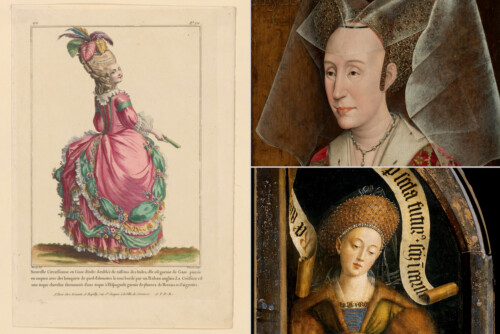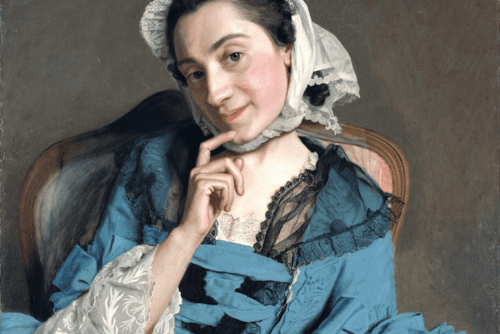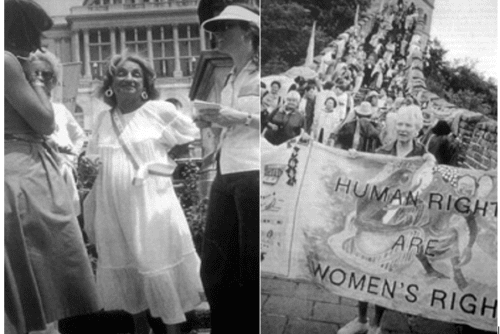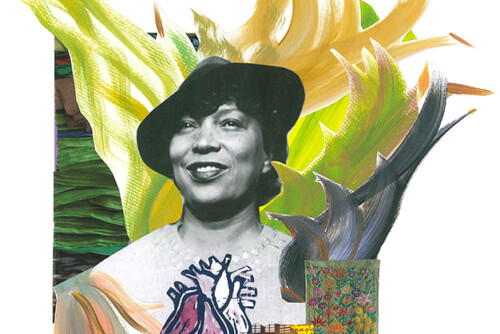Role Portraits and Allegorical Portraits
Theatrical portraits, allegorical portraits (portraits of living persons in the guise of mythological figures or as personifications of seasons, places, values or virtues), and portraits histories (historical portraits that render double or multiple layers of identity) had an escapist quality that made them particularly desirable given the complex relationship to the past in the early aftermath of the Revolution. Romany’s decision to develop her art in this genre is not in the least unusual. Allegorical portraits depicted men and women, but they privileged women models, which Romany’s oeuvre reflects. To the extent to which we know Romany’s corpus of portraits today, women outnumber men as subjects.
If painting Thénard as Hermione is justified by the sitter’s identity as a woman actor, the representation of Romany’s relative and friend, Amélie-Justine Laidin de la Bouterie, née Pontois, as Flora, speaks to the taste for depicting women in mythological guise (figure 7). Unlike Romany’s portrait of Rivière, the portrait of de la Bouterie has an allegorical layer, signified by flowers and a natural environment. This component complicates the sitter’s identity because it does not illustrate a historical moment, as Thénard’s portrait does (through the reference to the 1800 performance of Andromaque). According to Robert Rosenblum, in a portrait historié, the tension between the rendering of the model and the allegorical or theatrical layer is resolved by exposing the artifice involved in the staging of the portrait sitting session.1 Both the role portrait and the portrait historié are premised on the centrality of performance in the construction of the sitter’s identity.
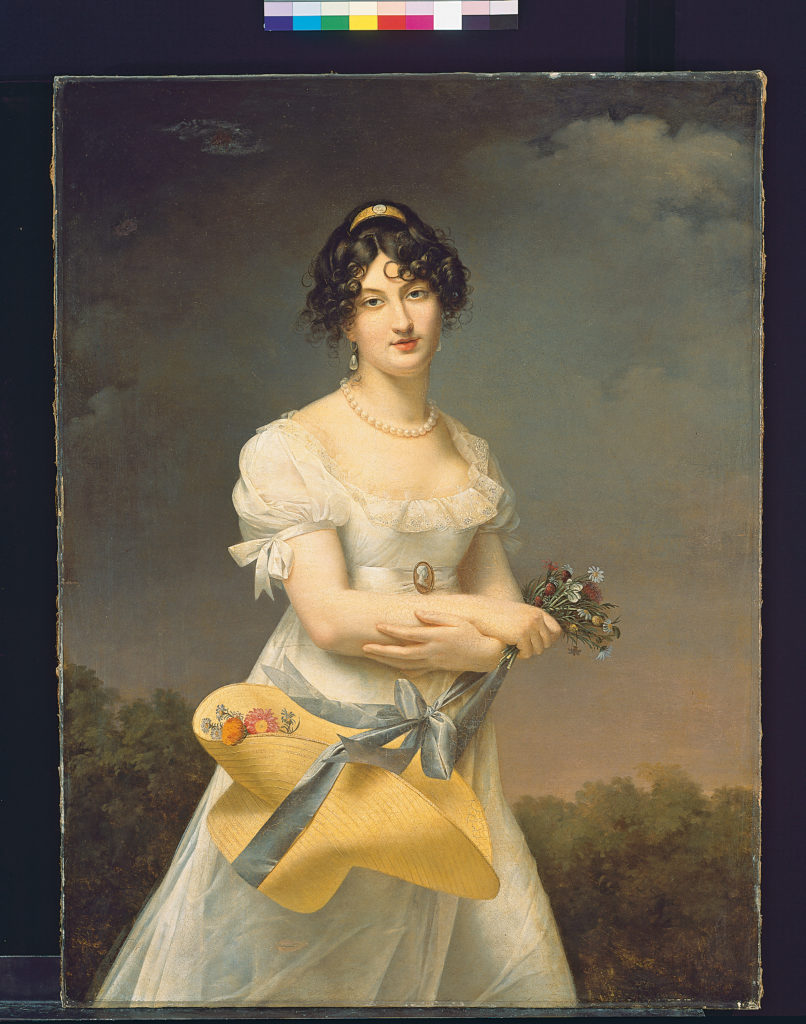
The success of role portraits and the proliferation of allegorical portraits also made an image like Lebrun’s Portrait of Mme de Staël as Corinne possible (figure 8). This portrait is an innovative combination of the two forms: it evokes the sitter’s performance for the portrait-sitting session itself, as well as the role the sitter performs as a character from her own novel of the same name. Hesse, among others, notes the contradiction at the core of Corinne as alter ego for Staël: Corinne has been understood as “an autobiographical portrait of the woman writer as a tragically misunderstood genius,” but Staël’s own success as a writer unsettles that interpretation.2 Lebrun and Staël collaborated to give visual form to this contradiction. Like Romany’s portrait of Thénard, this portrait presents the viewer with a dichotomy between actor and character, albeit of a different kind. Both works are examples of a similar creative process and can arguably be understood as “performance portraits” that help forge the multifaceted identities of women artists, performers, and writers involved in creating the portraits.
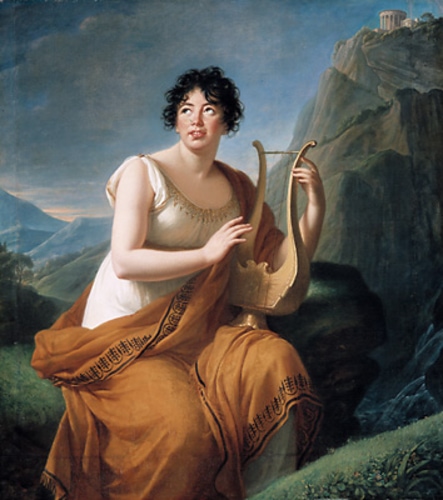
Identity and Community
Both women actors and painters put their professions in the spotlight, staging their sitters and their personae, respectively, with an apparatus akin to that of the theater (props, lighting, costume, impersonation, performance). Through a theatrical construction of the self, these women created an alternative realm that they could convey to others. Performance portraits gave women actors and painters the material means to control the public circulation of the personas they constructed through cross-disciplinary collaboration.
Romany’s portrait of Thénard celebrates the careers of both sitter and painter – women artists who had survived the fall of the ancien régime and who found, through their collaboration, a way to develop their professional lives at the intersection of theater and the visual arts. Women like Romany and Thénard created an interdisciplinary community that fostered women’s sociability. This social network helped women to professionalize their status as artists and to construct an identity that granted them both independence and public prominence.
An earlier version of this paper was presented at the International MARGOT Conference “Women and Community in the Ancien Régime” at Barnard in June 2014. I thank the conference organizers for the opportunity to develop this topic and my doctoral adviser Professor Anne Higonnet for her guidance. I am grateful to the staff of the Comédie Française for granting me access to their collections and archives. Last but not least, my thanks go to Mr. Joseph Baillio and Dr. Margaret Oppenheimer, whose time and insight have nourished this project.
- Robert Rosenblum, “Portraiture: Facts versus Fiction,” in Citizens and Kings: Portraits in the Age of Revolution, 1760–1830, ed. Sébastien Allard et al. (London: Royal Academy of Arts, 2007), 23. [↩]
- Hesse, The Other Enlightenment, 28. See also: José-Luis Diaz, ed., Madame de Staël, Corinne, ou, L’Italie: l’âme se mêle à tout (Paris: SEDES, 1999); Beatrix Kendler-Szader, Madame de Stael: Liebe, Ehe und feministische Tendenzen in den Romanen Delphine und Corinne (Sankt Augustin: Academia, 2002). [↩]
